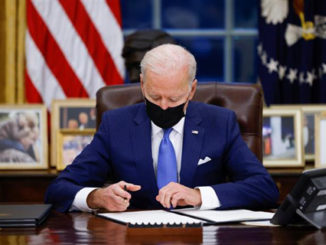
New Delhi (TIP): The disclosure of a meagre Rs 3,770 crore in black money held abroad by 638 declarants has raised serious doubts about the efficacy of government’s compliance scheme.
The Finance Ministry today said 638 declarations received under the one-time compliance window, which opened on July 1 and ended on September 31, had brought out undisclosed foreign assets amounting to Rs 3,770 crore under the Black Money (Undisclosed Foreign Income and Assets) and Imposition of Tax Act. These figures were subject to final reconciliation.
Tax at the rate of 30 per cent and penalty at the rate of 30 per cent will have to be paid by December 31 on these declarations.
The Congress attacked the government and Prime Minister Narendra Modi for making false claims on the quantum of black money and bringing it back to the country. Party chief spokesperson Randeep Surjewala said Modi had claimed more than Rs 80 lakh crore in black money was stashed abroad and that he would bring it back within 100 days of coming to power and deposit Rs 15 lakh in everyone’s bank account.
Tax consultants say the response to government’s scheme has been much below expectations. Girish Vanvari, National Head of Tax, KPMG in India said: “Seeing the quantum of declarations made, one can question as to whether the black money law has been successful. Expectations were of a much higher number. The low response can be attributed to uncertainty of the process and lack of clarity.”
While comparisons may be not be strictly applicable, the service tax amnesty scheme launched by the UPA government in 2013 yielded around Rs 7,700 crore to the exchequer. The Voluntary Compliance Encouragement Scheme (VCES) was launched in May 2013 to enable service tax defaulters to pay dues without penalty or late payment charges.
While various estimates of black money have been floating around, the government has said in Parliament there is no official estimate regarding the amount of black money generated in the country.
Finance Minister Arun Jaitley had said in Parliament varying estimations of the amount of black money had been reported by different persons and institutions.
He had said such estimations were based on different sets of facts, data, methods, assumptions leading to varying inferences.
The question remains that given the low level of disclosures under the black money compliance window, either the humongous figures have been faulty or the black money abroad has been routed in a way that it has become legitimate through financial structures. The Supreme Court-appointed special investigation team (SIT) on black money headed by Justice MB Shah in its recent report had raised doubts if participatory notes (P-notes) being used by foreign portfolio investors are being used to funnel unaccounted wealth into India.
“How can Cayman Islands with a population of less than 55,000 invest Rs 86,000 crore in a single country like India?” the SIT had stated in its report. It had expressed the suspicion that P-notes being used by foreign investors in the stock markets could be unaccounted wealth in the guise of FII money.
Registered foreign institutional investors issue P-notes to overseas investors who wish to invest in the Indian stock markets without registering themselves with market regulator Securities and Exchange Board of India.
The SIT report had raised concerns that some of the money coming into the market via P-notes could be the unaccounted wealth camouflaged under the guise of FII investment. The SIT had suggested that obtaining information on “beneficial ownership” of P-notes was of crucial importance to prevent their misuse.
Industry had voiced concerns that the black money law was creating fear and panic. Industry chamber Assocham had said the compliance window in the black money law had created more confusion and fear in the minds of industry leaders, professionals, and trading entrepreneurs.





Be the first to comment